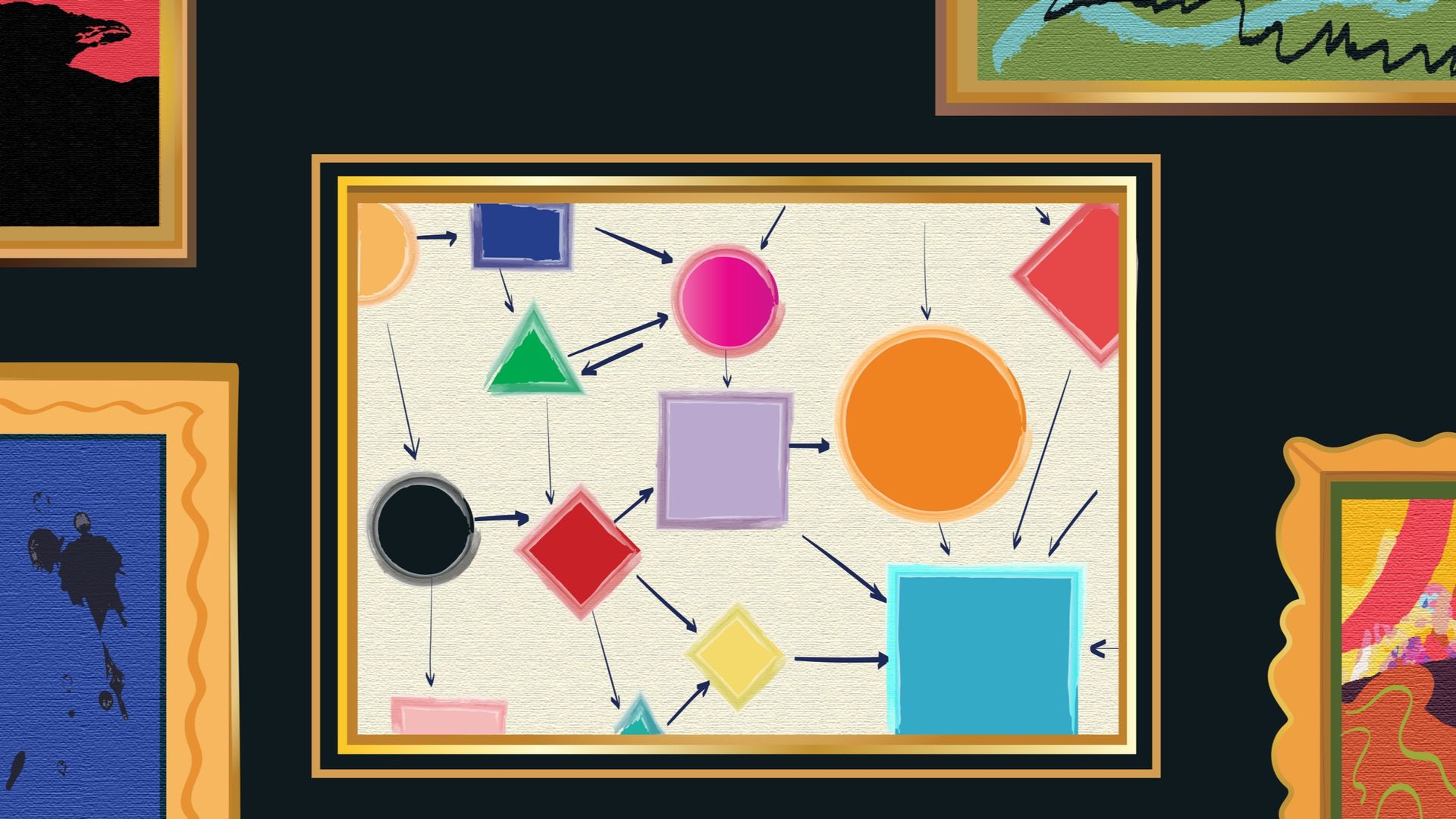尊敬的用戶您好,這是來自FT中文網的溫馨提示:如您對更多FT中文網的內容感興趣,請在蘋果應用商店或谷歌應用市場搜尋「FT中文網」,下載FT中文網的官方應用。

Two decades ago, Artuto Cifuentes, a Chilean financier, used his quantitative skills to parse financial derivatives with great effect: long before 2008, he warned that a financial crisis loomed (influencing my own journalism).
二十年前,智利金融家阿圖羅•西富恩特斯(Artuto Cifuentes)利用他的定量技能成功解析金融衍生品:早在2008年之前,他就警告說金融危機即將來臨(對我的新聞工作產生了影響)。
Now, however, Cifuentes has another mission: he is redeploying his skills to analyse art, exploring issues such as the relative return and risk profile of Jean-Michel Basquiat’s paintings. (Complex calculations in his co-authored book The Worth of Art suggest that Basquiat not only outperforms US equities, but also works by Renoir and Matisse.)
然而,西富恩特斯現在有了另一個任務:他正在重新運用他的技能來分析藝術,探索讓-蜜雪兒•巴斯奎特(Jean-Michel Basquiat)的畫作的相對回報和風險特徵。(他與人合著的《藝術的價值》一書中的複雜計算表明,巴斯奎特的表現不僅優於美國股票,還優於雷諾阿和馬蒂斯的作品)。
Is this a good thing? It is an intriguing issue to ponder as Art Basel Miami Beach gets under way, amid parties, celebrity gossip and frenzied debates about artistic trends.
這是一件好事嗎?當邁阿密海灘(Miami Beach)巴塞爾藝術展(Art Basel)開始時,人們會思考這個引人入勝的問題,伴隨著派對、名人八卦和對藝術趨勢的瘋狂辯論。
Previously, artists and collectors have preferred to think of this world in terms of creativity, not finance. After all, art prices are driven by slippery cultural mores, not utility value — or, as the American sociologist Thorstein Veblen cynically observed, signals around social status. Those would seem to defy any spreadsheet.
以前,藝術家和收藏家更願意從創意而非金融的角度來思考這個世界。畢竟,藝術品的價格是由變幻莫測的文化風俗而不是實用價值所驅動的,或者正如美國社會學家索爾斯坦•維布倫(Thorstein Veblen)憤憤不平地觀察到的那樣,是關於社會地位的信號。這些似乎無法用任何電子表格來解釋。
However, Cifuentes is not alone in looking at creativity through a quantitative lens. A growing number of art collectors are also focused on an investment frame as well. This might horrify artists. But such financialisation could deliver one big benefit: more transparency. And this is badly needed, given that the art world has been as opaque — and scandal-prone — as derivatives in decades past.
然而,西富恩特斯並不是唯一以定量視角看待創造力的人。越來越多的藝術收藏家也關注投資框架。這可能會讓藝術家感到恐慌。但是這種金融化可能會帶來一個巨大的好處:更多的透明度。考慮到藝術界過去幾十年來一直像衍生品一樣不透明且容易引發醜聞,這是非常需要的。
This point is underscored by recent surveys. Take a biennial one that has been done since 2011 by the consultants Deloitte Private and ArtTactic into art “stakeholders”, such as wealth managers, family offices and brokers.
最近的調查進一步證實了這一點。以德勤私人(Deloitte Private)和ArtTactic爲顧問的一項兩年一次的調查自2011年以來一直在進行,調查的對象是藝術「利益相關者」,如財富管理人員、家族辦公室和經紀人。
The 2023 report notes that there has been “a significant shift” in attitudes to art during the past decade. Back in 2014, only 53 per cent of wealth managers considered art expertise part of their industry. However, in 2016 this leapt to 78 per cent and now stands at 90 per cent.
2023年的報告指出,在過去十年中,對藝術的態度發生了「重大轉變」。在2014年,只有53%的財富管理人員認爲藝術專業知識是他們行業的一部分。然而,在2016年,這一比例躍升至78%,現在已經達到了90%。
Three-quarters of wealth managers now offer art services, compared with a quarter in 2011, while 41 per cent of collectors now cite financial value as “their primary motivation” for buying art, the highest level since the survey began.
現在有四分之三的財富管理人員提供藝術服務,而2011年只有四分之一,同時有41%的收藏家現在將財務價值作爲購買藝術品的主要動機,這是自調查開始以來的最高水準。
A separate annual study from UBS and Art Basel, run for a decade, echoes this theme, albeit with some difference in the details. This year it polled almost 3,000 high net worth individuals, who control some $2tn of wealth that could be used for art. Financial motives were cited as the second-biggest reason for buying art, topped only by “personal pleasure and identity” (except in Brazil and Japan, where they actually dominated).
瑞銀(UBS)和巴塞爾藝術展的一項獨立年度研究已經進行了十年,儘管在細節上存在一些差異,但它也呼應了這一主題。今年,該研究對近3000名高淨值個人進行了調查,他們掌控著約2兆美元的財富,可以用於購買藝術品。除了巴西和日本(在這兩個國家,金融動機實際上占主導地位),購買藝術品的第二大原因是「個人樂趣和身份認同」。
This report also noted rising “research-based” purchases, or those that happen after number-crunching rather than on impulse. And there has been an “explosion” in the use of credit, it adds: about half of collectors report buying art with loans and art is increasingly being used as collateral for borrowing. In other words, financialisation is happening on several fronts.
該報告還指出,基於研究的購買正在增加,即那些經過數據分析而非衝動購買的購買。此外,信貸的使用也出現了「爆炸性」成長:大約一半的收藏家表示他們用貸款購買藝術品,而藝術品越來越多地被用作借貸的抵押品。換句話說,金融化正在多個方面發生。
Why? One probable reason is that wealthy individuals want portfolio diversification at a time when the outlook for mainstream assets is becoming unpredictable, due to gyrating interest rates and geopolitical risk.
爲什麼?一個可能的原因是,由於利率波動和地緣政治風險,主流資產的前景變得難以預測,在這種情況下,富人希望分散投資組合。
This may not always be as effective a tactic as people hope. At present, collectors — or investors — seem optimistic about the market and slightly more bullish than they are about stocks: 77 per cent expect art prices to rise next year, the UBS report says.
這可能並不總是人們所希望的一種有效策略。目前,收藏家或投資者對市場持樂觀態度,對藝術品的看漲程度稍高於對股票的看漲程度:根據瑞銀報告,77%的人預計明年藝術品價格將上漲。
But the rising use of credit could make art prices track the interest rate cycle more closely in the future. And past price performance has been very mixed. The Knight Frank luxury index, for instance, suggests that art prices jumped 30 per cent last year, beating most other assets. However, the UBS report shows that some sectors, such as non-fungible tokens, have collapsed in value recently.
但信貸使用的增加可能會使藝術品價格在未來更緊密地追隨利率週期。過去的價格表現非常複雜。例如,萊坊奢侈品指數(Knight Frank luxury index)顯示,去年藝術品價格上漲30%,漲幅超過多數其它資產。然而,瑞銀的報告顯示,一些領域,如非同質化代幣,最近價值暴跌。
Meanwhile, the Deloitte report points out that the Artnet fine art index only delivered a 2.5 per cent compound annual growth rate between 2008 and 2023. That is lower than for the S&P 500, real estate and gold (8.5 per cent, 3.8 per cent and 4.9 per cent respectively).
與此同時,德勤報告指出,Artnet藝術品指數在2008年至2023年間只實現了2.5%的複合年成長率。這低於標普500指數、房地產和黃金的成長率(分別爲8.5%、3.8%和4.9%)。
The second issue that is driving this financialisation is transparency. As the Deloitte report notes, more than 80 per cent of wealth managers believe there will be more visibility around deals, fees and sourcing in the future, due to the fast-expanding use of digital technology.
推動金融化的第二個問題是透明度。正如德勤報告所指出的,超過80%的財富管理者認爲,由於數字技術的快速發展,未來交易、費用和溯源將更加透明。
Online art auctions, which proliferated during the pandemic, are one example of this. Others are digital registries of sales and prices and the use of blockchain technologies to establish provenance.
在疫情期間激增的在線藝術品拍賣就是一個例子。其他例子還包括銷售和價格的數字登記,以及使用區塊鏈技術確定來源。
So far the results have been patchy — some corners of the market are still highly opaque. But the more credible and transparent it becomes, the more likely it is to attract new investors, who will in turn expect further transparency, in a self-reinforcing cycle.
迄今爲止,這方面的成果並不顯著--市場的某些角落仍然非常不透明。但市場變得越可信、越透明,就越有可能吸引新的投資者,而這些投資者又會期待進一步的透明度,從而形成一個自我強化的循環。
Don’t expect this to spark much discussion in the Miami galleries this week. At art fairs, financialisation remains a dirty word. But if this trend drives more money into the art world, those artists should have reason to raise a glass to it. As Cifuentes says, even algorithms can create beauty.
不要指望這在邁阿密畫廊中引起太多討論。在藝術博覽會上,金融化仍然是一個不受歡迎的詞。但是,如果這種趨勢將更多的資金投入藝術世界,那些藝術家應該有理由爲此舉杯慶祝。正如西富恩特斯所說,即使是演算法也能創造美。